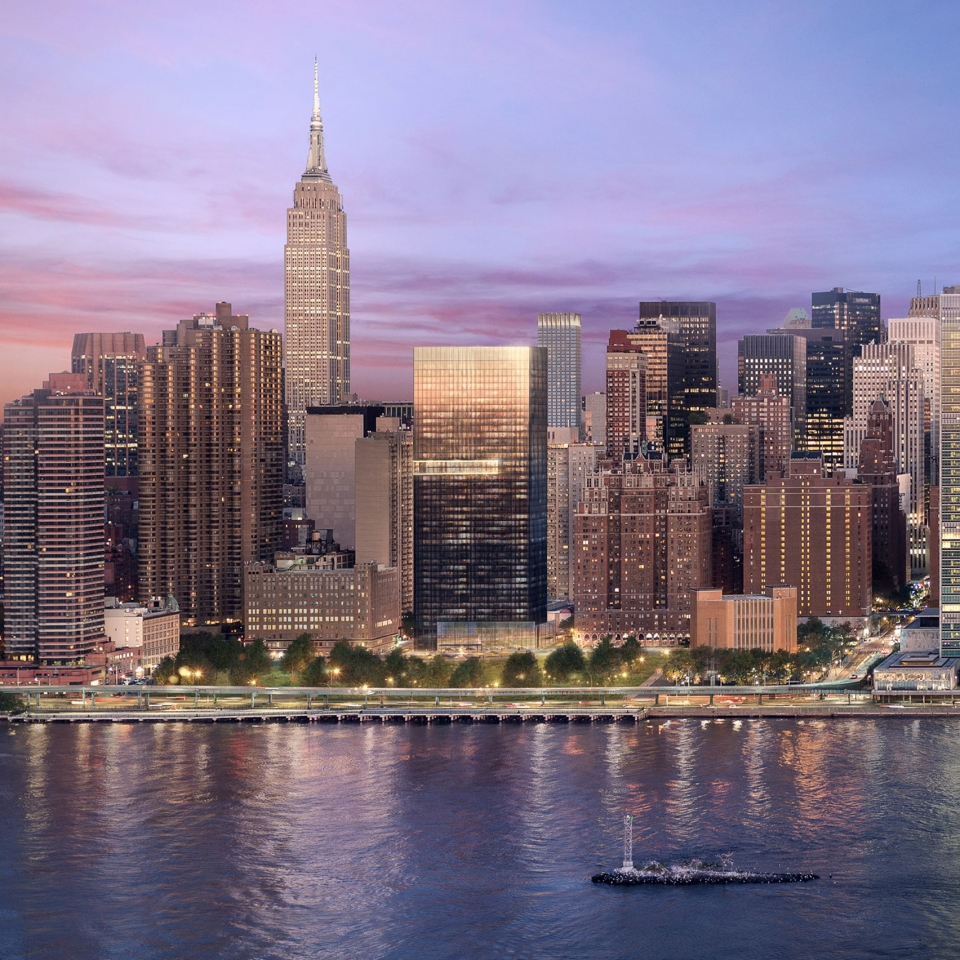Anna Winston: Since you started out in New York in the 1960s, what's been the biggest positive change in architecture and is there anything that you're not comfortable with?
Richard Meier: I think the main thing that's changed is the scale. I look out the window here and I see the Empire State Building and I can relate to that at the scale of a city, but if I look out another window I think "oh my god". The scale is changing, not for the better.
Even with the Empire State Building, the buildings around it, you feel that there's a context, that they're related. There's a scale to New York as there is a scale to London, and that's what makes the city great – as you walk from one area to another the scale changes and you feel related at ground level to what's around you. That's started changing – the way it is now, it's disrespectful. It's disrespectful to a whole city, so I'm very concerned that everyone's trying to make a taller building here. This is not Kuala Lumpur, it's New York. New York has a quality to it and you have to respect the context.
Anna Winston: What's driving that push to build things taller?
Richard Meier: Probably the cost of land. The land is so expensive you have to put up something to justify the cost of the land. Unfortunately, much of the work that's done by developers, it's just how much money can they make out of it.
You look at the Rockefeller Center and even though the building is tall, there's an open space that's part of it, thank god for that! It's just a little gem that area, how important that is in that part of the city. Then thank god we have Central Park! Without Central Park I don't know what this city would be like. There's got to be a relationship between the built environment and open public space.
Anna Winston: The city does seem to have a particular problem at the moment with the cost of living and housing. There's a lot of very famous architects building very expensive condo towers here right now.
Richard Meier: Yes, it's terrible. We've done housing and continue to do housing, but there's not a public housing programme here any longer. There's no public housing, it's ridiculous, it's all private and it's all unfortunately quite expensive. I can see it from my apartment window, this very thin, tall slender building.
Anna Winston: Rafael Viñoly's tower?
Richard Meier: Yes. It's ridiculous; it's out of scale. You must spend, I don't know how much time, going up and down in the elevator. If you want to go out for a bottle of milk it's a half hour to go up and down. I don't know how people are going to live there.
Anna Winston: Do you think that cities like New York and London have an obligation to ask architects to create something that is for the social good?
Richard Meier: I think they do. Unfortunately the municipal governments in New York or in London have no programmes for doing housing, everything is done by private developers. I think it's a poor time for public housing.
Anna Winston: What do you think about architects like BIG?
Richard Meier: I was at a symposium maybe a month ago and I was sitting next to Bjarke Ingels. I'd never met him before and there were questions from the audience like "what's your favourite building in New York?"; "what don't you like?", and I said, "you know there's one building in New York I really hate, it's on 59th street in the West Side yard, it's just so unlike and unrelated to New York," and he's sitting right next to me. I said, "This is not personal but that building is just, in my view, so inappropriate."
Anna Winston: What makes it inappropriate?
Richard Meier: The scale of it, the form of it, it's so aggressive. New York is a city that is a grid. This could be out in New Jersey in the meadow lands, it's unrelated to anything.
We're doing these houses in Bodrum and they're very different to a house we were going to do in Connecticut. The climate is different, the relationship of one house to another is totally different, the topography – everything about it – the way they use the house.
Anna Winston: But there's still a lot of glass?
Richard Meier: Oh yeah. And they happen to be white.
Anna Winston: What is it about white?
Richard Meier: Well it's all colours. You get these light changes, you see the colour of nature, you see the colour that's all around us most clearly where the white is. It's never one thing, it's always changing.
You know, when I look back there's nothing I wish I hadn't done. There's some [buildings] I prefer. The public buildings I think are the most important because they get used by the public. Whether it's a museum, like the Getty that continues to get thousands of people all the time. People go back to it, they enjoy being there and that gives me pleasure – that other people get pleasure from experiencing the place. We do a private house, it's just for a couple of people; when you do a public building many people can enjoy it.
